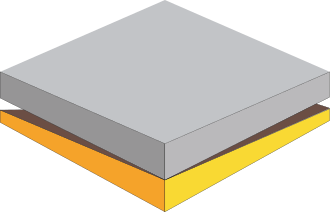Source code for pygeopressure.velocity.smoothing
# -*- coding: utf-8 -*-
"""
2-d smoothing
"""
from __future__ import (absolute_import, division, print_function,
unicode_literals)
__author__ = "yuhao"
import ast
import numpy as np
from scipy import ndimage
[docs]def smooth(x, window_len=11, window='hanning'):
"""
Smooth the data using a window with requested size.
This method is based on the convolution of a scaled window with the signal.
The signal is prepared by introducing reflected copies of the signal
(with the window size) in both ends so that transient parts are minimized
in the begining and end part of the output signal.
Parameters
----------
x : ndarray
the input signal
window_len : scalar
the dimension of the smoothing window; should be an odd integer.
window : scalar
the type of window from 'flat', 'hanning', 'hamming', 'bartlett',
'blackman' flat window will produce a moving average smoothing.
Returns
-------
y : ndarray
the smoothed signal
Examples
--------
>>> t=linspace(-2,2,0.1)
>>> x=sin(t)+randn(len(t))*0.1
>>> y=smooth(x)
See Also
--------
numpy.hanning, numpy.hamming, numpy.bartlett, numpy.blackman,
numpy.convolve scipy.signal.lfilter
TODO: the window parameter could be the window itself if an array
instead of a string
Notes
-----
length(output) != length(input), to correct this: return
y[(window_len/2-1):-(window_len/2)] instead of just y.
"""
if x.ndim != 1:
raise ValueError("smooth only accepts 1 dimension arrays.")
if x.size < window_len:
raise ValueError("Input vector needs to be bigger than window size.")
if window_len < 3:
return x
if window not in ['flat', 'hanning', 'hamming', 'bartlett', 'blackman']:
raise ValueError("Window is on of 'flat', 'hanning', 'hamming',\
'bartlett', 'blackman'")
s = np.r_[x[window_len-1:0:-1], x, x[-1:-window_len:-1]]
if window == 'flat': # moving average
w = np.ones(window_len, 'd')
else:
# w = eval('numpy.' + window + '(window_len)')
w = ast.literal_eval('numpy.' + window + '(window_len)')
y = np.convolve(w/w.sum(), s, mode='valid')
# return y
# return y[(window_len/2 - 1): -(window_len/2 + 1)]
return y[(window_len//2-1): -(window_len//2)]
[docs]def smooth_2d(m):
smoothed = ndimage.filters.gaussian_filter(m, 1)
# m, n = smoothed.shape
# for i in xrange(m):
# for j in xrange(n):
# smoothed[i][j] = float("%.2f" % smoothed[i][j])
smoothed = np.round(smoothed, 2)
return smoothed
[docs]def smooth_trace(trace_data, window=120):
data = np.array(trace_data)
mask = np.isfinite(data)
smoothed = smooth(data[mask], window_len=window//2, window='flat')
# using half the window length in order to be consistent with opendtect
data[mask] = smoothed
return data
